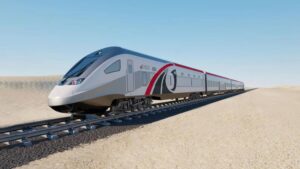One of the most significant national infrastructure initiatives in the United Arab Emirates is the recently opened Etihad Rail. The rail’s top speed of 350 km/h makes it easier to move between cities and opens up new business prospects in a number of industries. It is anticipated to contribute more than AED 145 billion to the UAE’s GDP over the next fifty years, making it a major force behind the expansion of several industries, including the real estate market.
Enhancing Regional Communication and Promoting Mobility
The enhancement of connectivity between cities and regions, which greatly eases mobility, is one of the Etihad Rail project’s most obvious effects. The rail’s great speed will allow locals to move between emirates in a matter of minutes, creating new job opportunities and housing options close to important business centres.
The population of the areas around the train stations will rise as a result of this ease of travel, increasing demand for real estate and making the locations more appealing to both locals and investors. This will raise the prices of both residential and commercial properties. Before prices sharply increase, investors will have the chance to buy real estate in these prospective neighbourhoods.

Development of Real Estate in New Locations
There is a genuine chance to develop new areas with the Etihad Rail project. Real estate developers will start building new projects in areas that will be easier to reach because of the high-speed rail’s increased connectivity between cities and regions. In order to satisfy the demands of the local populace, these projects might incorporate contemporary apartment buildings, shopping malls, and other facilities. The development of underutilised areas will be strongly encouraged, resulting in a favourable climate for real estate investment.
Opportunities and Difficulties in the Real Estate Industry
The Etihad Rail project offers a lot of prospects, but there are also certain obstacles facing the real estate market. The expense of construction projects close to train stations is one of the primary problems, which could result in price increases. Furthermore, there may be fierce rivalry for land in these locations, necessitating creative approaches from investors and developers.
However, considering the significant infrastructural changes that are predicted as well as the projected demand for real estate in locations that are connected to the rail lines, the potential are still significant. Those that take advantage of these chances will have a good chance of earning substantial returns on their real estate investments.
In addition to being a transport project, the Etihad Rail represents a huge investment opportunity that will increase intercity travel and raise the value of real estate. This initiative will encourage the expansion of the real estate industry in new regions and offer chances for investors hoping to profit from notable shifts in the market.



